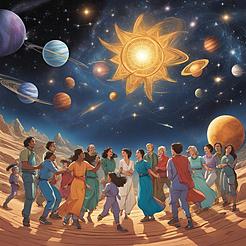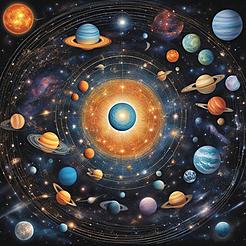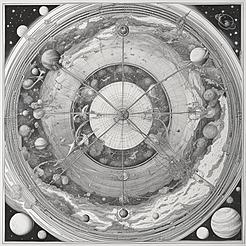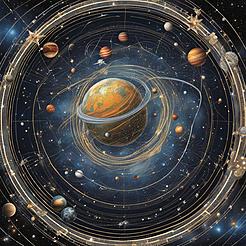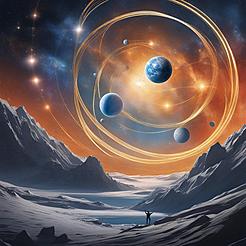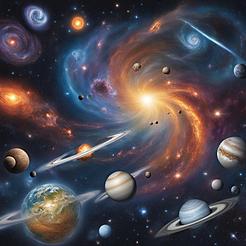 henrydjacob
henrydjacob- Chapter
- 2024-04-15

As we delve deeper into the captivating realm of celestial mechanics, we encounter a profound mystery that has intrigued astronomers and mathematicians for centuries: the enigmatic N-Body problem. Imagine a cosmic dance where not just two, but multiple celestial bodies interact with each other through the intricate web of gravitational forces. This is the challenge that the N-Body problem presents – understanding the complexities that arise when multiple celestial bodies influence each other's motion in space.
The N-Body problem is like solving a celestial puzzle with countless moving pieces, each exerting its gravitational pull on the others, creating a dynamic interplay of forces that shape their trajectories through the cosmos. From planets orbiting a star to galaxies swirling in the vast expanse of space, the N-Body problem unveils the intricate dance of celestial bodies and the mathematical models used to decipher their motion.
To demystify the N-Body problem, we must first grasp the fundamental principles that govern the interactions between multiple celestial bodies. At the heart of this challenge lies the gravitational force, a universal phenomenon that attracts every object with mass towards one another. In the context of the N-Body problem, this gravitational force becomes the driving factor that influences the paths of celestial bodies as they move through space.
One of the key issues posed by the N-Body problem is the unpredictability of the interactions between multiple celestial bodies. Unlike the simplicity of a two-body system, where the motion can be precisely calculated using Newton's laws of motion and gravitation, the dynamics of an N-Body system are far more intricate. The gravitational pull exerted by each body on every other body leads to a complex network of forces that can result in chaotic and unpredictable behavior.
In tackling the N-Body problem, astronomers and mathematicians have developed sophisticated mathematical models to simulate the motion of multiple celestial bodies. These models, often based on numerical integration techniques, allow researchers to predict the trajectories of planets, stars, and galaxies as they interact with each other over time. By carefully analyzing these simulations, scientists can unravel the mysteries of celestial dynamics and gain valuable insights into the behavior of N-Body systems.
One of the most famous examples of the N-Body problem is the study of the gravitational interactions within our own solar system. The Sun, planets, moons, and asteroids all exert gravitational forces on each other, creating a complex system of celestial bodies whose motions are intricately linked. By applying mathematical models and computational algorithms, astronomers can track the orbits of these celestial bodies with remarkable precision, uncovering the hidden patterns that govern their movements.
As we venture deeper into the complexities of the N-Body problem, we come to appreciate the delicate balance between stability and chaos inherent in celestial dynamics. While some N-Body systems may exhibit stable, predictable behavior over long periods, others may succumb to the disruptive forces of chaos, leading to erratic and unpredictable motion. Understanding this interplay between order and disorder is essential in unraveling the mysteries of the universe's celestial choreography.
In the quest to demystify the N-Body problem, we are drawn into a world of mathematical elegance and cosmic complexity, where the gravitational interactions among multiple celestial bodies reveal the hidden harmonies of the cosmos. By peering into the depths of space and time, we unlock the secrets of the celestial dance that unfolds before our eyes, shedding light on the intricate patterns that shape the universe's grand tapestry of motion.
References:
- Celestial Mechanics: The Waltz of the Planets by Alessandra Celletti and Ettore Perozzi
- Gravitation by Charles W. Misner, Kip S. Thorne, and John Archibald Wheeler
- Chaos: Making a New Science by James Gleick
